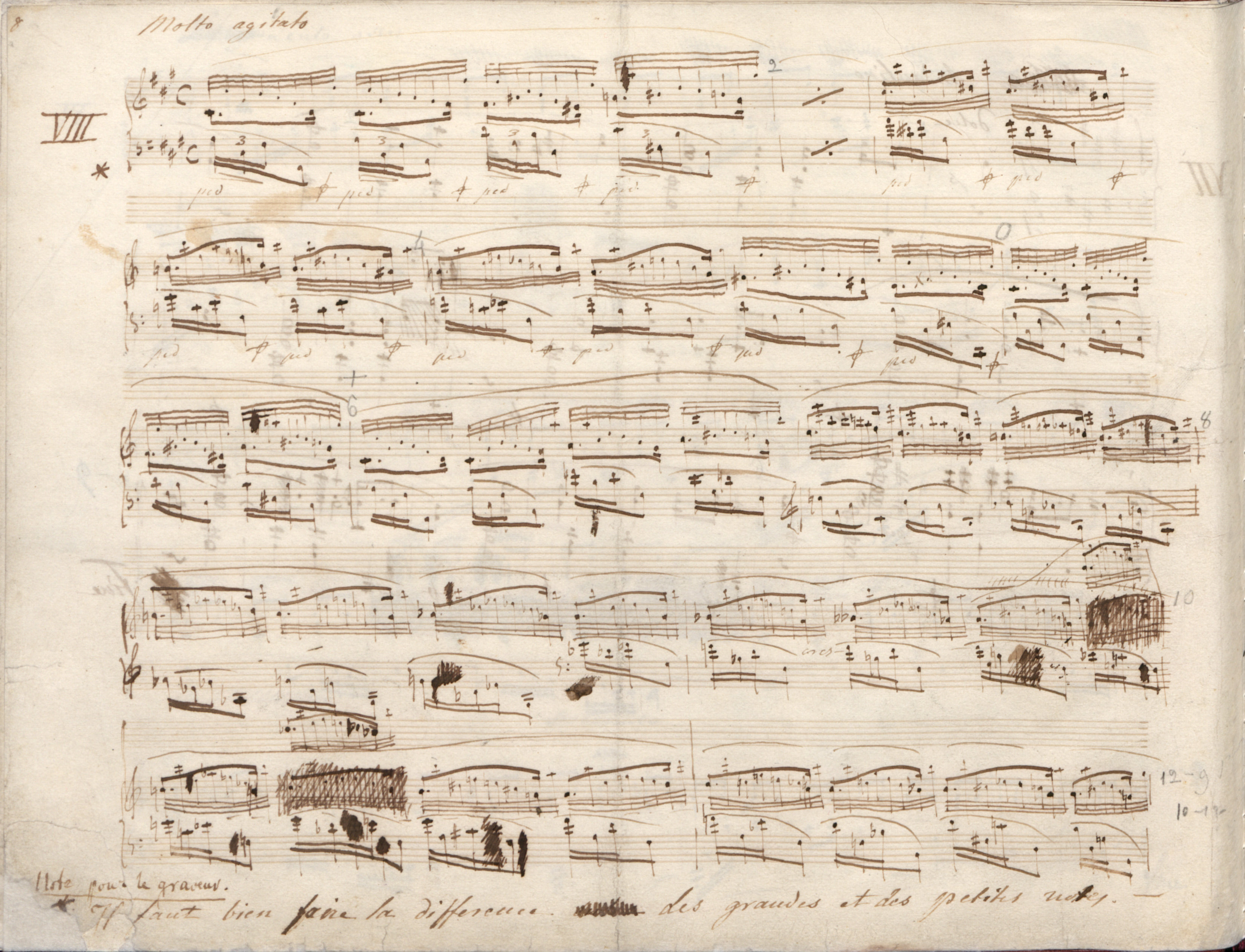



In the figurations featuring the interval of an octave, Chopin would often be satisfied with an accidental placed only next to the first note constituting that interval (cf., e.g. the Etude in A Major, Op. 10 No. 10, b. 5-8 or the Ballade in F Major, Op. 38, b. 48). In the Prelude in F
Major, Op. 10 No. 10, b. 5-8 or the Ballade in F Major, Op. 38, b. 48). In the Prelude in F Minor, such an extended validity of accidentals is a strictly observed rule – accidentals are absent even in the places where they are necessary to cancel the previous alteration (e.g. on the 2nd demisemiquaver on the 3rd beat of b. 4), while in b. 8 Chopin actually crossed out the necessary accidental next to the 2nd demisemiquaver in the 3rd figure. In the discussed bars, apart from the situation in b. 4 mentioned above, the problem concerns the 8th demisemiquaver in the 3rd group in b. 1-2 and 4, the 8th demisemiquaver in the 1st, 2nd and 4th groups in b. 3 and the 2nd demisemiquaver on the 3rd beat of b. 3. Such a notation is to be found in A (→FC,FE→EE1), whereas EE2, GE1 and GE2 added the majority of the necessary accidentals (5, 6 and 7 out of the eight necessary, respectively).
Minor, such an extended validity of accidentals is a strictly observed rule – accidentals are absent even in the places where they are necessary to cancel the previous alteration (e.g. on the 2nd demisemiquaver on the 3rd beat of b. 4), while in b. 8 Chopin actually crossed out the necessary accidental next to the 2nd demisemiquaver in the 3rd figure. In the discussed bars, apart from the situation in b. 4 mentioned above, the problem concerns the 8th demisemiquaver in the 3rd group in b. 1-2 and 4, the 8th demisemiquaver in the 1st, 2nd and 4th groups in b. 3 and the 2nd demisemiquaver on the 3rd beat of b. 3. Such a notation is to be found in A (→FC,FE→EE1), whereas EE2, GE1 and GE2 added the majority of the necessary accidentals (5, 6 and 7 out of the eight necessary, respectively).
The L.H. quavers falling an octave lower than the first semiquaver of a given figure provided with an accidental are written down in a similar way, without the necessary accidentals – see b. 3-4.
Compare the passage in the sources »
category imprint: Interpretations within context; Differences between sources
issues: EE revisions, Accidentals in different octaves, GE revisions, Inaccuracies in A, Errors repeated in GE, Errors repeated in FE, Errors repeated in EE
notation: Pitch

